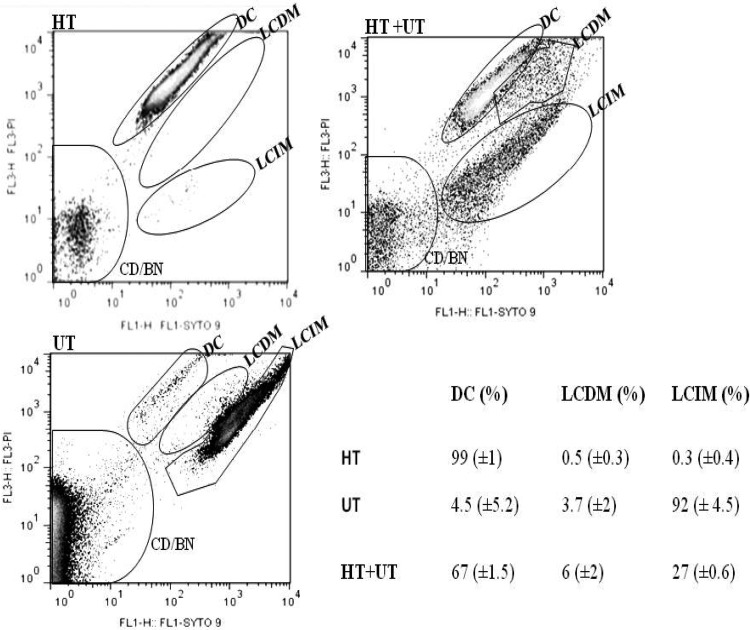Fig 1.
Characterization of mycobacterial integrity by flow cytometry. The program Flowjo (version 7/9) was used to analyze the population distribution of mycobacteria, which is represented by a pseudocolor plot. Using automatic and manual gating options, we could count the number of events per population and therefore estimate the representative percentage of each population. When the untreated (UT) sample was stained with SYTO-9 and propidium iodide (PI), the analyses indicated that 92% of the population was LCIM, while 3.7% was LCDM and 4.5% was DC. In the heat-treated (HT) sample, 99% of the population was indicated to be dead, while 0.5% was LCDM and 0.2% was LCIM. When equal amounts of the heat-treated and untreated cells were mixed, 67% of the population was indicated to be dead, while 27% was LCIM and 3.7% was LCDM. This shows that this technique was sensitive enough to detect cells with damaged membranes even in a population mixture, implying consistency of the results showing that in an actively growing wild-type M. smegmatis culture at an OD600 of ∼0.5, the membrane integrity of ∼92% of the cells is still intact. DC, dead cells; CD/BN, cellular debris and background noise; HT+UT, mixture of an equal ratio of the untreated and heat-treated samples.

